nemo’s gear
steampunk informed appropriation of mythical worlds and hardware
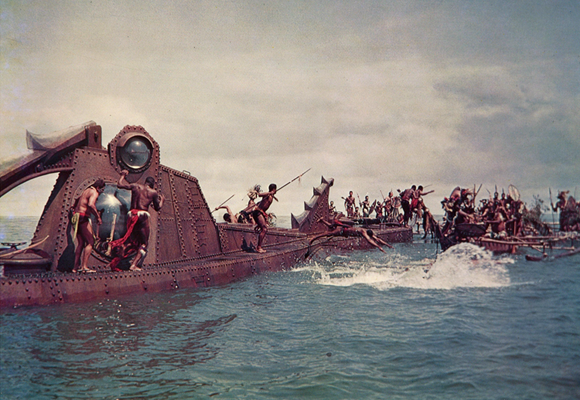
It was clear as a scuttle—sometime around Christmas they would re-air “↑20,000 leagues under the sea,” the 1954 Disney rendition for the silver screen of ↑Jules Verne‘s ↑1870 novel. They always do, and so they did this time. Just having read ↑H. G. Wells‘ brilliant scientific romance “The first men in the moon” (1901), rewatching “Leagues” came in handy and forcefully threw me back into my embracing of steampunk æsthetics. Accordingly I haunted the Web for material and found that Captain Nemo’s submarine “Nautilus” is maybe the best researched and documented steampunk artefact around.
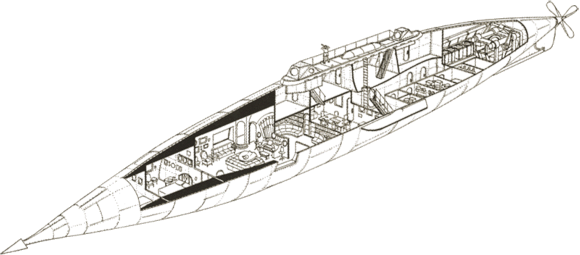
Michael & Karen Crisafulli’s ↑Twenty Thousand Leagues under the Sea website is a large compendium of research on ↑Verne’s Nautilus as described in the original novel. Besides a lot of own research and work, there is a ↑catalog of “nearly fifty concepts in words, two and three dimensions,” bringing together a lot of different research and creativity. The ingenuity of the people dealing with the “Nautilus” by far surpasses mere design, but goes in-depth into retro-invention of e.g. machinery itself, as e.g. ↑Jean Pierre Bouvet’s concepts for the vehicle’s engine demonstrate.
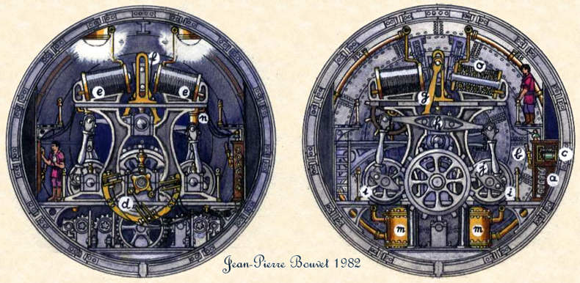
Besides this projects based on the canonical text, there is research on second order artefacts. That means research on interpretations—especially the version created by ↑Harper Goff (1911-1993) for the movie directed by Richard Fleischer:
The story is that the Disneys wanted a simple cigar-tube hull rather as described in the novel and not unlike contemporary submarines. Harper Goff preferred an intricate Victorian appearance but could not convince the studio heads. He scratch-built this concept model over a long holiday weekend. Walt Disney was taken by the model and Goff’s concept prevailed. […]
Rather than the stark utilitarian exterior that Verne described and Neuville and Riou drew, Goff extended the ornate Victorian interior decoration to the hull and deck. He enhanced the monster impression by adding reptilian fins and protuberances and gave the pilothouse a crocodilian look. I think he wanted movie viewers to come away with an impression equivalent to that of Verne’s readers in the previous century. People used to the sailing and steam ships of the mid-1800s and unfamiliar with submarines would see and remember a low sleek hull as monster-like. Moviegoers in the 1950s knew what a submarine looked like, but they had never seen anything like this Nautilus. [↑The Catalog of Nautilus Designs]
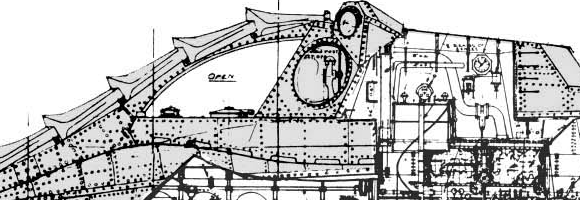
Goff’s somewhat ↑bionics approach strikes the fancy of quite a community—↑Disney Sub‘s motto is “Honest to Goff” and brings together a ↑plethora of research and artistical recreations.
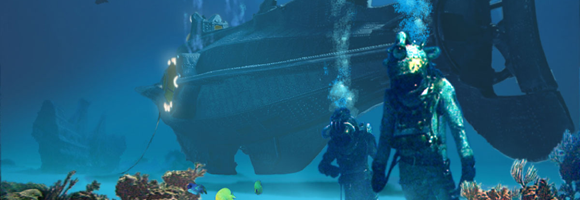
Science Fiction fans in general, and for instance Star-Wars followers in particular, go for lengths in practicing this kind of research on storyworlds, on the universes of literary and movie fiction. Professional academics have driven this practice to the extreme, producing astounding and sometimes very applicable results. The absolute top-of-the-heap may be physicist ↑James Kakalios‘ ingenious book “The physics of superheroes” (↑2005; Gotham, Penguin). If you have no clue about how to lead your teenage kids to the joys of natural science, go and grab this masterpiece. If this proposal sends shivers down your spine, because you as a rational and secularized being loath superheroes, then dive into ↑Harold Schechter‘s “↵New gods: Psyche and symbol in popular art“ (↵1980) and emerge the wiser. Seen from my vantage point all this are instances of cognitive appropriation of mythical worlds.
At times this is driven even farther by transgressing the boundaries between the categories cognitive appropriation and reworking or modifying, as there are those who transpone their gained knowledge about mythical things to the creation of original artefacts. There is a lot of art around which clearly is informed by the conventions of steampunk, but of peculiar interest are those artefacts which are not mere carriers of a recognizable set of æsthetics, but are functional in an analogous context as the one of their fictional antetypes. Steampunk-styled sculptures to be exhibited in artsy galleries are all very well, but in the vicinity of cyberpunk or steampunk most artefacts which make their appearance are machines of some provenance. Only with the creation and/or modification of functional machines the different principles of appropriation fuse and come full circle.
A most impressive instance of this is Patrick Regan’s work. Pat, proprietor of ↑Vulcania Submarine, Hawaii, is a diving and underwater technology specialist:
Our R&D with underwater technologies led to the development of a closed-circuit engine system we believed capable of powering a submarine. Next, we developed and built a steel pressure hull for a High Performance Submersible project we called the ↑HYPERSUB. The intent was a minisub capable of high speed and long endurance, for whatever practical purposes such might have. […]
One night while I was doing a rough sketch of a crash-bar to protect the front view ports, I visualized the HYPERSUB running fast awash, and the image of Captain Nemo’s NAUTILUS on the attack came to mind. I did the math and realized it might just be possible to build a steel NAUTILUS replica outer hull around the HYPERSUB pressure hull. Because 20,000 LEAGUES had been the movie that started my interest in underwater technologies as a young boy; and because there had never been an actual manned submarine of Disney NAUTILUS configuration in any scale; the project seemed worthwhile. And from that moment on the HYPERSUB project became the ↑NAUTILUS MINISUB.
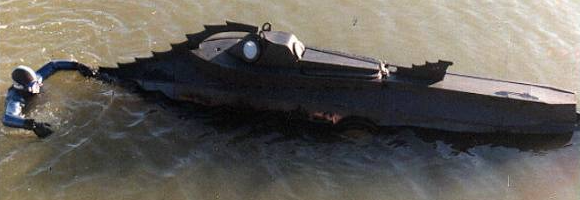
Just in case you missed it, the gist of this is, that Pat has built a functioning minisubmarine with the faithful looks of the 1954 movie version at a 1/10th scale.
There is a video of Pat’s 1991 test run of ↑his minisub at YouTube. In 2001 he started to ↑rework the submarine and graced it with scale exterior detail for a Discovery Channel program. But he did not stop at that. Meanwhile he has created several versions of the ↑diving helmets and suits of Captain Nemo and his crew and the ↑underwater rifle seen in the movie as well—everything fully functional! That way Nemo’s gear finally has left the realm of fiction and has come to this world.
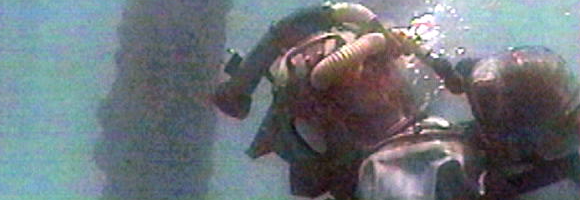


Thanks for your kind words. There’s been a lot going on; I published a Leagues prequel in 2013; registered two 2-part screenplays in 2015, and am in the process of refurbishing the submarine and building more diving gear for video to be filmed here in Hawaii and also in Florida. There’s a few more videos online now, too. Check the VSC website and my Facebook page for more info. KEEP ON LEAGUIN’ Pat
This is amazing :) More than a decade after my post there is a comment … by a core protagonist of the post :D Nice to hear from you, and I am glad that you liked the post. I will definitely check all the new material, thanks for hinting. All the Best, zeph